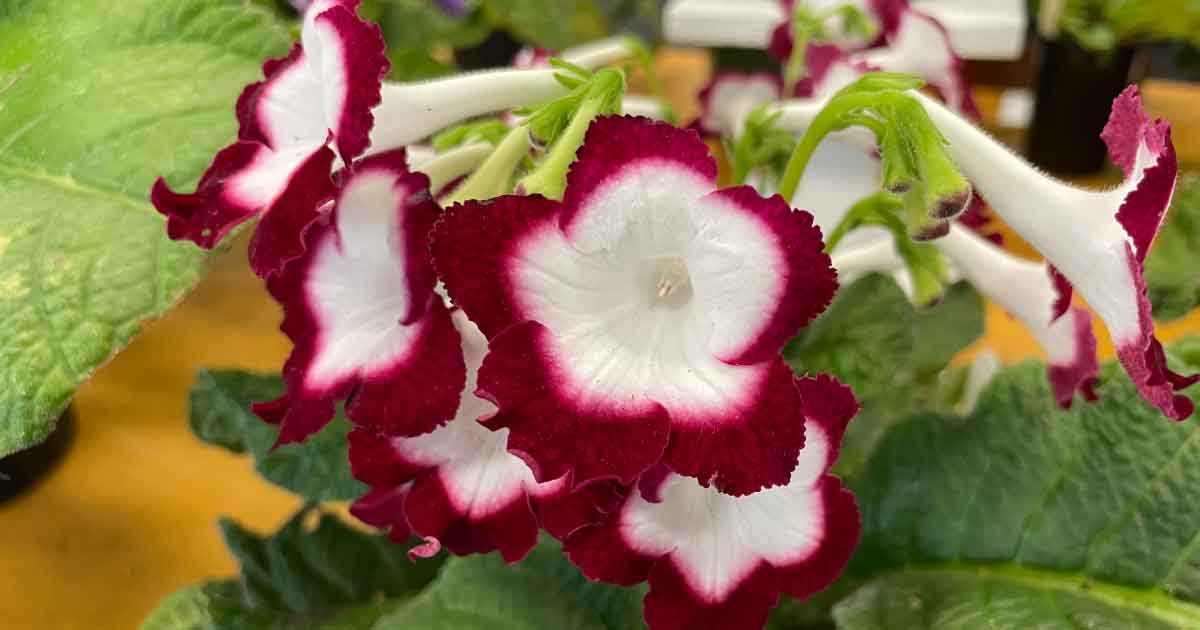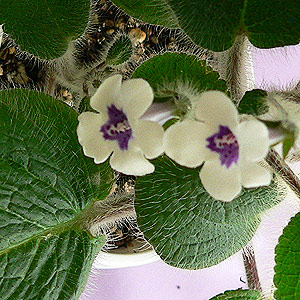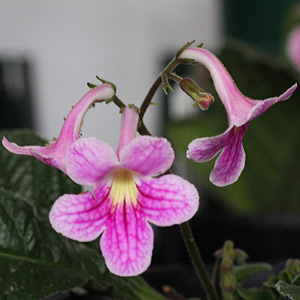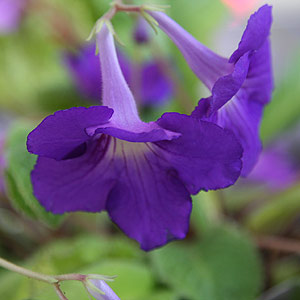
Cape Primrose or Streptocarpus are commonly called False African Violet and are in fact related to African Violets.

Mostly hybrids of Streptocarpus saxorum and S. caulescens, they are a colorful flowering plant with large textures leaves.
Although many of the species flower as purple, the modern hybrids have a huge variety. Cape Primrose or Streptocarpus are becoming increasingly popular as a house plant.
They require similar growing conditions to African Violets and are generally grown as house plants.
Widely grown in hanging baskets, and also suitable for growing in containers, they flower from spring through summer to fall. Try a position indoors where they get good morning light.

We think they are easier to grow than the African Violets, so give Streptocarpus a try.
How to Grow Streptocarpus
Streptocarpus or ‘Cape Primrose’ are native to South Africa and grow high in the mountains in dappled shade.
Generally easy to grow given a peat of coco fibre based free draining potting mix and a bright but shaded position. Try a position where the plant gets filtered morning or afternoon light.
Watering Streptocarpus needs to be monitored, over watering will cause rot, so allow the potting mix to dry out between watering’s.

Removal of spent flower heads helps prevent rot and disease. A temperature between 50° and 80° F is ideal.
Streptocarpus Varieties
Many cultivars are now on the market including:
- Streptocarpus ‘Blue Mars’,
- Streptocarpus ‘Black Panther’
- Streptocarpus ‘Concord blue’.
These plants are part of the Gesneriaceae family of plants that also includes :
- Achimenes
- Aeschynanthus
- African Violets
- Episcia
- Petrocosmea
- Primulina
- Sinningia
With around 150 genera and over 3000 species this is a large group of mainly tropical and subtropical plants

